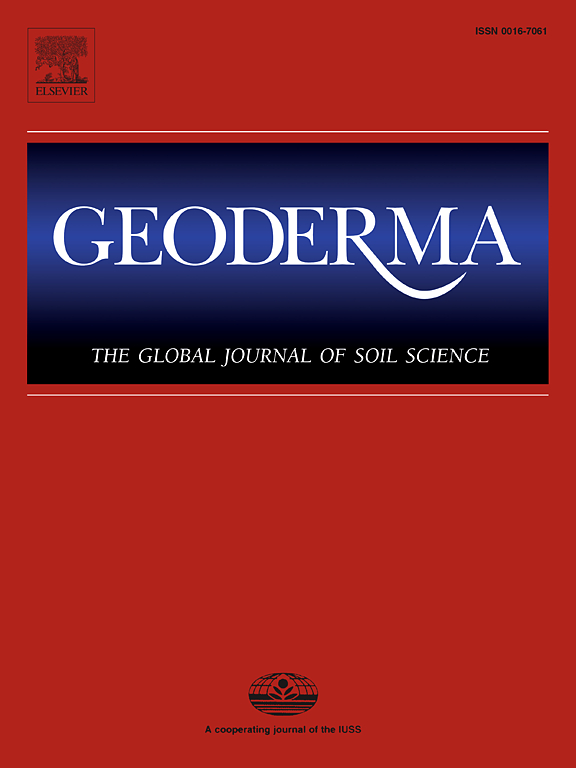鸟粪石和沸石在改善土壤微生物生理和减少二氧化碳排放方面的农业循环利用潜力
IF 5.6
1区 农林科学
Q1 SOIL SCIENCE
引用次数: 0
摘要
循环利用农业生态系统中的养分对促进农业的可持续性越来越重要。通过废水处理产生的鸟粪石和富氮沸石具有养分循环利用的潜力。然而,它们对土壤特性的影响,特别是对微生物生理学的影响,在很大程度上仍然未知;特别是在微生物反馈方面,可能会导致基本元素的损失或隔离。本研究研究了在酸性砂质土壤中施用鸟粪石和源自液体消化液的富氮沸石以及天然沸石改进剂后,土壤微生物的短期(3天)生理反应、有效养分的变化,以及对土壤有机质(SOM)和二氧化碳(CO2)排放的直接影响。所有处理都增加了土壤pH值,这是可溶性有机碳(C)溶解和微生物生产N-、C-和磷(P)获取胞外酶的驱动因素。随着土壤pH值的增加,微生物生物量C (Cmic)与微生物生物量N (Nmic)的化学计量比以及酶促C:N比降低,表明酶促微生物N循环的效果优于C循环。二氧化碳排放量增加,特别是施用有机肥(消化液),其中最高的微生物代谢商反映了由于有机c的立即可用性而增加的分解代谢活性。总的来说,沸石凝灰岩显示出减少二氧化碳排放的潜力,可能是由于二氧化碳的吸附能力。本文章由计算机程序翻译,如有差异,请以英文原文为准。
Potential for agricultural recycling of struvite and zeolites to improve soil microbial physiology and mitigate CO2 emissions
Recycling nutrients in agroecosystems is becoming increasingly important to promote agricultural sustainability. Struvite and nitrogen (N)-enriched zeolites produced via wastewater treatment offer the potential for nutrient recycling. However, their effects on soil properties, particularly on microbial physiology, remain largely unknown; especially regarding microbial feedback, from which losses or sequestration of essential elements may result. This study investigates the short-term (three days) physiological responses of soil microorganisms, changes in available nutrients, and the immediate effects on soil organic matter (SOM) and carbon dioxide (CO2) emissions following the application of struvite and N-enriched zeolites derived from liquid digestate, alongside natural zeolites amendments in an acidic sandy soil. All treatments increased soil pH, which emerged as a driving factor in the dissolution of labile organic carbon (C) and the microbial production of N-, C-, and phosphorus (P)-acquiring extracellular enzymes. As soil pH increased, the stoichiometric ratio of microbial biomass C (Cmic) to microbial biomass N (Nmic), along with the enzymatic C:N ratio decreased, suggesting a superior effect on microbial N-cycling compared to C-cycling. Carbon dioxide emissions increased, particularly with the application of organic fertilizer (digestate), where the highest microbial metabolic quotient reflected increased catabolic activity due to the immediate availability of organic C. Overall, zeolitized tuffs demonstrated the potential to mitigate CO2 emissions, likely due to CO2 adsorption capacity.
求助全文
通过发布文献求助,成功后即可免费获取论文全文。
去求助
来源期刊

Geoderma
农林科学-土壤科学
CiteScore
11.80
自引率
6.60%
发文量
597
审稿时长
58 days
期刊介绍:
Geoderma - the global journal of soil science - welcomes authors, readers and soil research from all parts of the world, encourages worldwide soil studies, and embraces all aspects of soil science and its associated pedagogy. The journal particularly welcomes interdisciplinary work focusing on dynamic soil processes and functions across space and time.
 求助内容:
求助内容: 应助结果提醒方式:
应助结果提醒方式:


